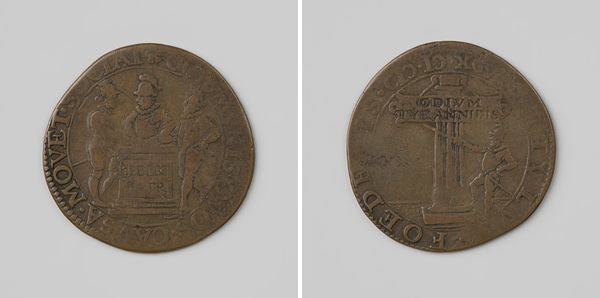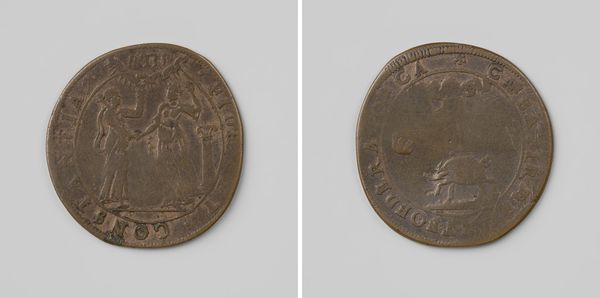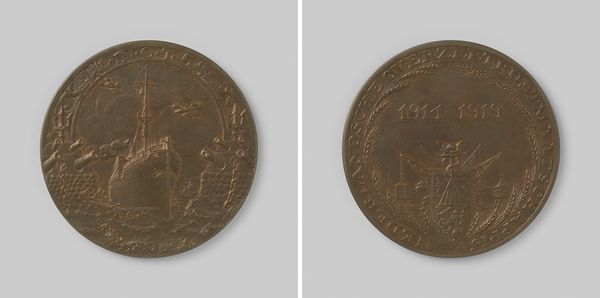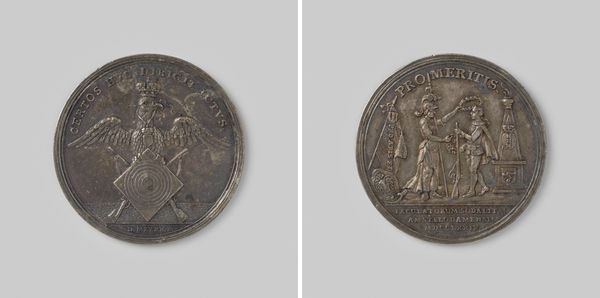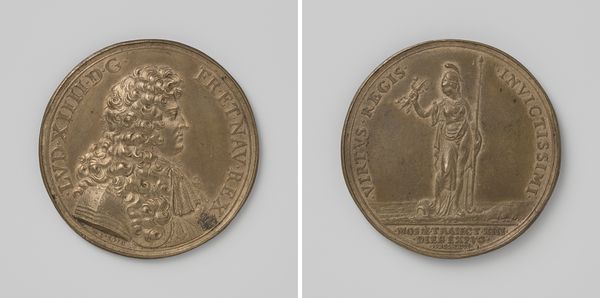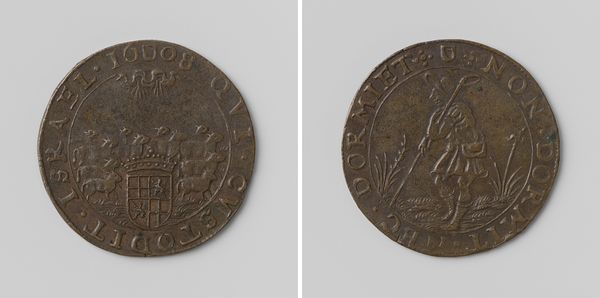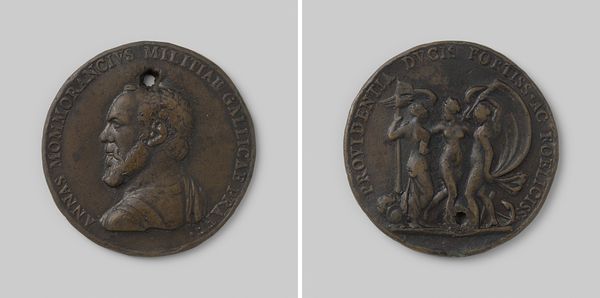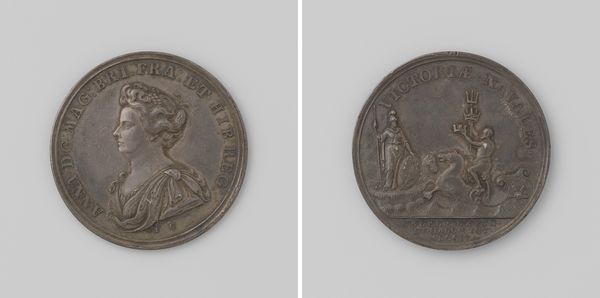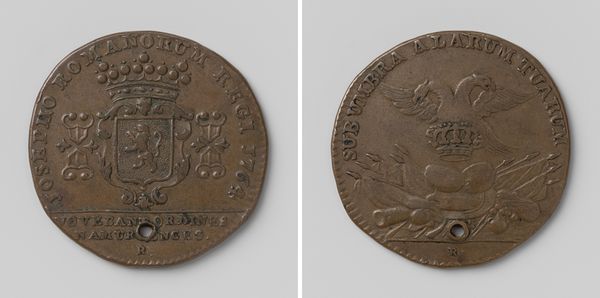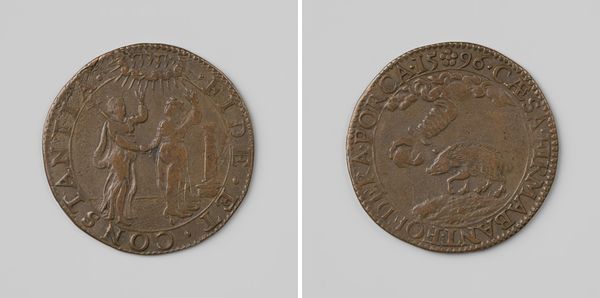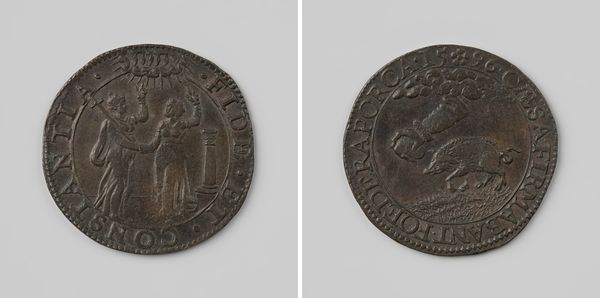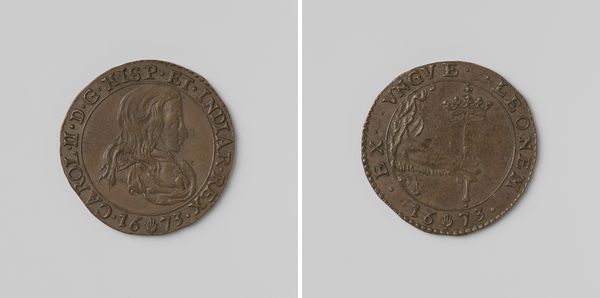
Moord op Willem I, prins van Oranje-Nassau, door Balthasar Gerard te Delft 1584
0:00
0:00
carving, print, metal, relief, sculpture, engraving
#
portrait
#
carving
# print
#
metal
#
sculpture
#
relief
#
sculpture
#
carved
#
history-painting
#
engraving
Dimensions: diameter 3 cm, weight 5.35 gr
Copyright: Rijks Museum: Open Domain
Editor: Here we have "Moord op Willem I, prins van Oranje-Nassau, door Balthasar Gerard te Delft," a carving by Gerard van Bylaer from 1584. It looks like a metal print or engraving, possibly a coin or medal. The depiction of the murder is quite striking. What catches your eye in this piece? Curator: The visual relationships are what initially strike me. The composition's circular form compels the eye to orbit. Note the contrast in depth between the shallow relief of the figures and the almost diagrammatic arrangement of the scene, coupled with the stark lettering, which frames and reinforces the central image. This juxtaposition flattens the pictorial space. Editor: Flattening? It feels quite detailed to me, considering its size. Curator: Detail is not necessarily depth. Observe how the figures are presented almost as ciphers, their emotional content reduced to gestures dictated by the narrative, serving primarily as structural components. The material—presumably a base metal, given the patination—lends a weight, an almost funereal gravity. How does the symmetry, or lack thereof, in the coin affect its visual impact? Editor: Well, the hole drilled through it certainly disrupts the composition. It makes it feel almost defaced. Curator: Precisely! The defacement alters the interplay between surface and form. That interruption, that imperfection, challenges our reading of the work. Editor: It's fascinating how the formal elements can change so dramatically our understanding of a historical moment. Thank you for elucidating these visual strategies! Curator: It has been my pleasure; reflecting on form often reveals function and affect in unexpected ways.
Comments
No comments
Be the first to comment and join the conversation on the ultimate creative platform.
